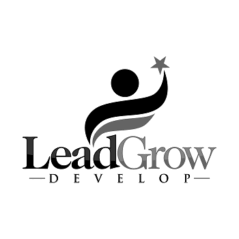Key Takeaways
- Effective market research is vital for aligning product development with consumer preferences.
- Data-driven insights enhance branding strategies, ensuring they resonate with the target audience.
- Innovative research techniques offer a more profound understanding of consumer needs and future trends.
- Continuous research maintains a brand’s relevance in a dynamic market landscape.
Introduction
Understanding consumer needs and preferences is crucial for successful product development and branding in today’s competitive beauty industry. Makeup market research gives brands valuable insights that can shape everything from product innovation to marketing strategies. When conducted effectively, market research can ensure that a brand meets and exceeds consumer expectations, paving the way for enduring success in the market. This article will explore how makeup market research plays a pivotal role in product development and branding.
The Crucial Role of Makeup Market Research
Makeup market research is essential for identifying consumer trends, preferences, and pain points within the beauty industry. By analyzing consumer data, brands can tailor product development to align closely with consumers’ desires. This alignment is a significant factor in a product’s success upon launch. For instance, by understanding which products or ingredients are currently in vogue, companies can prioritize these in their development processes, ensuring they meet market demand effectively.
Furthermore, market research serves as a beacon to guide brands through the complex landscape of consumer preferences. By leveraging surveys, focus groups, and other research methodologies, companies can gain insights into what truly matters to their target audience. This data helps brands understand surface-level consumer wishes and deeper emotional connections, leading to products and brands that resonate more personally.
Enhancing Product Development Through Insights
Incorporating findings from market research into product development is innovative and necessary for launching successful products. Insights gained can inform various stages of development, such as formulation, packaging, and pricing. For instance, if research identifies a growing demand for sustainable makeup products, a brand can focus on developing eco-friendly alternatives to meet this market gap.
Moreover, market research can identify issues in existing products that might not be immediately obvious to the brand. This intelligence allows for iterative improvements that align with consumer needs, enhancing product quality and performance. By continuously engaging with consumers and learning from market feedback, brands can refine their offerings to drive satisfaction and loyalty.
Strategic Branding and Positioning
Branding is as much about perception as it is about products. Market research aids in crafting a brand narrative that resonates with consumers, creating a strong emotional connection, and building brand loyalty. By understanding the values and concerns of their audience, brands can tailor their messaging and branding strategies to align with the sentiments of their target demographic.
For example, if research shows that consumers are increasingly interested in cruelty-free products, a brand can emphasize its commitment to ethical practices in its branding efforts. This positioning attracts a dedicated consumer base and differentiates the brand in a crowded marketplace. Consistent research ensures that branding remains relevant and adapts to shifts in consumer attitudes over time.
Leveraging Innovative Research Techniques
Technology has transformed market research in the digital age, allowing for more nuanced and precise insights. Social media listening, sentiment analysis, and big data analytics have opened new avenues for understanding consumer behavior. These methods enable brands to gather real-time feedback and quickly adapt strategies to meet emerging trends.
Additionally, advanced research methodologies allow brands to simulate market scenarios and test campaigns before full-scale launches. This proactive approach reduces the risk of failure and positions brands to respond swiftly to consumer demands. Utilizing these innovative tools unlocks deeper insights, facilitating more informed decision-making throughout product development and branding processes.
Maintaining Relevance in a Dynamic Market
The beauty industry is constantly evolving, with trends emerging and fading rapidly. Continuous market research is imperative for maintaining a brand’s relevance and competitive edge. By regularly updating consumer insights and market data, brands can stay ahead of the curve, introducing products that cater to future needs and trends.
Furthermore, adaptive research strategies enable brands to pivot quickly in response to unexpected market shifts, such as economic downturns or public health crises. This agility is crucial for survival and success in a dynamic environment where consumer priorities can change overnight. Ongoing engagement with market data empowers brands to remain flexible, innovative, and responsive.
Conclusion
In summary, makeup market research is a powerful tool that shapes product development and branding, steering brands toward success in a competitive industry. By leveraging data-driven insights, brands can create products that align with consumer desires, foster strong brand connections, and adapt to market changes with agility. As the beauty landscape continues to evolve, the role of thorough and continuous market research will only grow more critical. Brands that prioritize and effectively implement research will be well-positioned to capture consumer hearts and maintain a leading edge in the beauty market.

